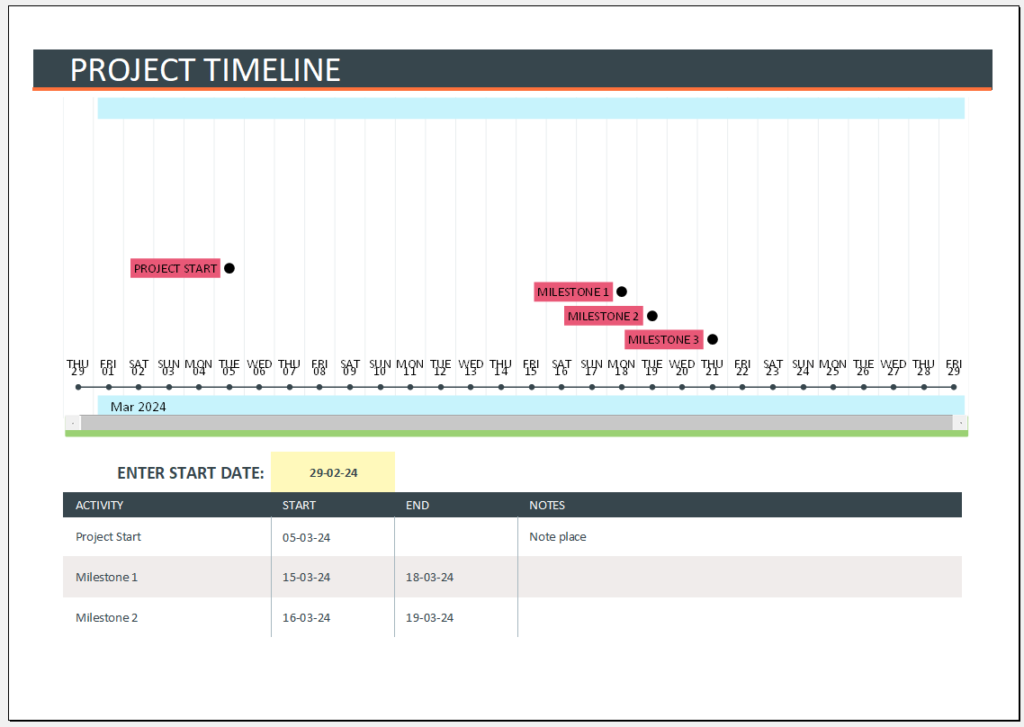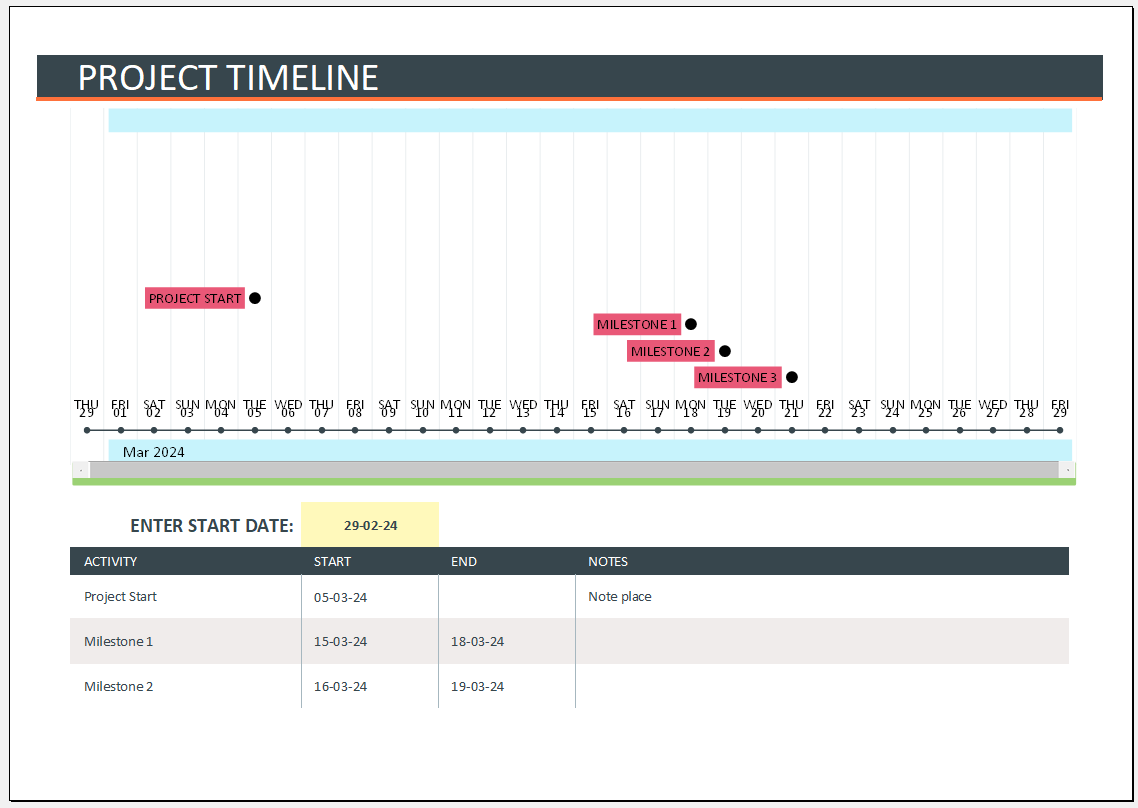Effective project management is the cornerstone of successful endeavors in any field. Whether you’re working on a small-scale initiative or a large-scale project, having a clear and well-defined plan is crucial. One of the key tools in project management is the project timeline.
In this article, we’ll delve into the concept of a Simple Project Timeline, exploring what it is, when to use it, its importance, and how to effectively implement it in your projects.
What is a Simple Project Timeline?
A Simple Project Timeline is a visual representation of the chronological order of tasks and activities within a project. It provides a clear roadmap, outlining the start and end dates of each task, and the overall project duration. Unlike complex project management tools, a Simple Project Timeline is easy to create and understand, making it an excellent choice for small to medium-sized projects.
When do we use Simple Project Timelines?
Simple Project Timelines are particularly useful in situations where the project is relatively straightforward, with a limited number of tasks and dependencies. Here are some scenarios where a Simple Project Timeline is beneficial:
Small Projects: For projects with a short duration and a manageable number of tasks, a Simple Project Timeline provides a quick and efficient way to organize and communicate the project plan.
Routine Tasks: If the project involves routine or repetitive tasks, a Simple Project Timeline can help streamline the workflow and ensure that each task is completed on time.
Team Coordination: In collaborative projects where team members need a shared understanding of the project’s timeline, a Simple Project Timeline serves as a visual reference point for everyone involved.
Client Communication: When working with clients or stakeholders, a Simple Project Timeline can be a powerful communication tool, helping to set realistic expectations regarding project milestones and completion dates.
Template

Project Timeline File: 82 KB
What is the importance of Simple Project Timelines?
Clarity and Communication: A Simple Project Timeline provides a straightforward visual representation of the project plan, enhancing communication among team members and stakeholders. This clarity ensures that everyone involved is on the same page regarding project milestones and deadlines.
Resource Allocation: By clearly outlining the tasks and their respective durations, a Simple Project Timeline facilitates effective resource allocation. Project managers can easily identify potential bottlenecks and allocate resources efficiently to ensure the timely completion of each task.
Risk Management: Identifying and managing potential risks is a critical aspect of project management. A Simple Project Timeline allows project managers to foresee potential delays and proactively address issues before they escalate, minimizing the impact on the overall project timeline.
Client Satisfaction: Clients and stakeholders often appreciate transparency and a clear understanding of project timelines. A Simple Project Timeline enables project managers to communicate realistic expectations, fostering trust and satisfaction among clients.
Efficient Task Sequencing: With a visual representation of task dependencies, project managers can sequence tasks more efficiently, ensuring that each task is completed in the optimal order. This can significantly contribute to the overall efficiency of the project.
How to use Simple Project Timelines?
Creating and using a Simple Project Timeline involves several key steps:
Define Project Scope: Clearly define the scope of your project, including all tasks and deliverables. Understanding the project’s objectives is crucial for creating an accurate timeline.
Identify Tasks and Dependencies: Break down the project into individual tasks and identify dependencies between tasks. Determine which tasks are dependent on others and which can be worked on simultaneously.
Estimate Task Durations: Estimate the duration of each task. This involves considering factors such as resources, skill sets required, and any potential risks or challenges.
Sequence Tasks: Arrange tasks in chronological order, considering task dependencies. This step ensures a logical and efficient flow of work throughout the project.
Assign Resources: Allocate resources, including personnel, materials, and equipment, to each task. This step helps prevent resource conflicts and ensures that each task has the necessary support for timely completion.
Create the Timeline: Utilize a visual tool, such as a Gantt chart or a timeline template, to create the Simple Project Timeline. Represent each task, its start and end dates, and any dependencies.
Regularly Update and Monitor: Project timelines are dynamic and subject to change. Regularly update the timeline as the project progresses, and monitor task completion to identify any deviations from the plan.
- Motor Pool Reservation Log
- Logistics Dispatch Sheet Template
- Daily Entry Summary Sheet
- Entry Badge Issuance Record Sheet
- Guest Entry Register Template
- Shopping & Souvenir List Template
- Maintenance Crew Entry Sheet
- Event Visitor Register
- Delivery Entry Register Template
- Late Arrival Log
- Pre-Trip to do List Template
- Staff Entry Register Template
- Monthly Attendance Tracker & Report
- Service Offering Description Form
- Inventory Planning Sheet Template
